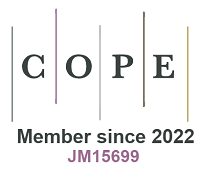Samarium redox catalysis
Abstract
Samarium (Sm) is one of the most important rare earth elements that have flexible entry to dual oxidation states (+3 and +2) under standard laboratory conditions, which has made it extremely valuable in chemical synthesis. Sm(II) reagents are widely used as versatile and stoichiometric reductants in organic synthesis. However, the use of a huge amount of metal salts and organic solvents causes cost and environmental issues, making Sm(II) reagents not potentially applicable to large-scale or industrial reactions. Therefore, the development of samarium-catalyzed reactions involving Sm(III)/Sm(II) redox cycling is of great importance. In this review, we summarize the state-of-the-art research on samarium redox catalysis. The key step of the redox cycle is the Sm(III)-to-Sm(II) reduction, which has thus far been enabled by various methods that will be outlined.
Keywords
INTRODUCTION
Rare earth elements have gained considerable attention due to their unique properties and applications[1]. Samarium (Sm) is one of the most important rare earth elements that have two stable oxidation states (+3 and +2) under ambient conditions, which has been of great value in chemical synthesis[2]. In this field, divalent samarium chemistry has occupied a central position because Sm(II) reagents are widely used as potent reductants in synthetic chemistry. Notably, SmI2 (Kagan’s reagent) is easily prepared and has been extensively used[3], which, up to now, has proved to be a versatile and stoichiometric reducing agent in a variety of reactions such as deoxygenation, reduction, Grignard/Barbier-type reactions, Reformatsky/aldol-type reactions, radical-based reductive coupling, and cascade reactions[4-8]. Therefore, the utilization of Sm(II) reagents has introduced new possibilities in synthesis, remarkably enhancing the toolbox available to synthetic chemists.
Although Sm(II) reagents have found broad applications in synthetic chemistry, they are usually used as super-stoichiometric reducing agents and thus consumed in large quantities. This has caused several problems that limit their practical applications, including the relatively high cost of samarium reagents and the environmental problem resulting from the consumption of a huge amount of solvents due to the poor solubility of samarium salts. The key to solving these problems is to render the reduction of Sm(III) to Sm(II) in the reaction, that is, to build a SmIII/II catalytic cycle[9]. As a consequence, the development of samarium-catalyzed reactions involving Sm(III)/Sm(II) redox cycling (namely samarium redox catalysis) is in high demand.
To establish samarium redox catalysis, several critical challenges must be addressed: (1) the limited solubleness of Sm(III) in common reaction media restricts homogeneous catalytic activity; (2) the poor reduction ability of Sm(III) complicates the regeneration of the active Sm(II) species essential for catalytic turnover; (3) the selection of appropriate reductants that balance compatibility with samarium redox cycles while minimizing side reactions or stoichiometric wastes; and (4) preventing ligand exchange during Sm(II) regeneration, which can disrupt catalytic integrity and reduce efficiency. These issues present substantial obstacles to the development of reliable and sustainable samarium-catalyzed reactions. In the last decade, these issues have been addressed to some extent with the emergence of relevant advances. In this review, we summarize the advances in samarium redox catalysis. Based on the difference of the Sm(III)-to-Sm(II) reduction step in the catalytic cycle, this review outlines five types of reactions [Figure 1]: (1) traditional catalysis utilizing chemical reductants; (2) electrocatalysis leveraging reductive electrolysis; (3) radical relay catalysis that bypasses the need for reductants or electrolysis; (4) photocatalysis driven by photochemical Sm(III)-to-Sm(II) reduction; and (5) samarium redox catalysis via Sm(III)-alkoxide protonolysis.
TRADITIONAL CATALYSIS UTILIZING CHEMICAL REDUCTANTS
As a traditional type of samarium redox catalysis, the reduction of Sm(III) to Sm(II) is achieved through the use of a chemical reductant. In 1996, Nomura et al. reported a groundbreaking SmI2-catalyzed pinacol coupling of aldehydes and ketones (1 or 2), efficiently affording 3 using magnesium as a stoichiometric reductant[10]. The catalytic system utilized merely 10 mol% SmI2 and excess Mg, with TMSCl serving as an additive to regenerate Sm(III) by quenching the Sm(III)-alkoxide intermediates. While the reaction delivered the products with high yields, no diastereoselectivity was detected. Control experiments confirmed the necessity of SmI2, as no reaction occurred in its absence, underscoring the involvement of a SmIII/II redox cycle. Subsequent advancements by Aspinall et al. in 2005 addressed the lack of diastereoselectivity by introducing a Sm/tetraglyme catalytic system [Figure 2][11]. Tetraglyme, a multidentate ligand capable of chelating both Sm(II) and Sm(III), was found to enhance stereochemical control. This modification not only improved reaction yields but also achieved diastereoselectivities comparable to those of traditional stoichiometric methods.
In 2019, Maity and Flowers conducted detailed mechanistic investigations into the Sm-catalyzed reactions originally developed by Endo and Greeves[12]. Their studies revealed compelling evidence that SmI2 is likely converted in situ to SmCl2 during the reaction, a transformation that significantly enhances reactivity due to the greater reducing power of SmCl2. This discovery has expanded the scope of samarium-catalyzed transformations, enabling access to previously challenging reaction pathways. Building on these mechanistic insights, Maity and Flowers used hexamethylphosphoramide (HMPA) as a key ligand to modulate reactivity and selectivity, enabling a Sm-catalyzed 5-exo-trig ketyl-olefin cyclization reaction. The study also elucidated the critical roles of Mg, HMPA, and TMSCl in the catalytic cycle, providing a deeper understanding of the factors governing reaction efficiency and selectivity [Figure 3][12].
Figure 3. Mechanistic insights into the SmI2-catalyzed pinacol coupling reaction using Mg reductant. Sm: Samarium; HMPA: hexamethylphosphoramide
Using metallic Mg as the reductant, the samarium redox catalysis can be readily established, but its utility in a diverse range of reactions remains constrained. Orsini et al. successfully implemented this protocol for Reformatsky-type couplings of α-halocarbonyl, α-halonitrile, and α-halophosphonate derivatives with aldehydes, ketones, and imines[13]. However, the broader application of these transformations is limited by the intrinsic reactivity of the Mg reductant, which has propensity to react with numerous organic substrates. Consequently, there has been a persistent demand for the development of a more robust reductant compatible with Sm(III)/Sm(II) redox catalysis. A significant advancement was achieved by Corey et al. in 1997, who developed a catalytic system combining SmI2, LiI, and TMSOTf with Zn-Hg. This innovative protocol enabled the highly efficient reductive coupling of ketones 4 with acrylates 5 to construct γ-butyrolactones 6 in excellent yields [Figure 4A][14]. Furthermore, the SmI2-Zn system was successfully applied to epoxide reductions and haloalkyne cyclizations, demonstrating its broader applicability and potential for diverse synthetic transformations.
Figure 4. (A) SmI2-catalyzed reductive coupling of acrylates and ketones with Zn-Hg reductant; (B) SmI2-catalyzed Reformatsky-type reactions using mischmetal reductant. Sm: Samarium.
The economic feasibility of reductants is a crucial factor in developing samarium-catalyzed reactions. Addressing this challenge, Hélion and Namy and Lannou et al. introduced a samarium redox catalytic system employing mischmetal as a cost-effective reductant. Mischmetal, an alloy predominantly composed of Ce (50%), La (33%), Nd (12%), Pr (4%), and trace amounts of other lanthanides (1%), offers an economic alternative to traditional reductants. This SmI2-mischmetal system has been successfully applied to a variety of transformations, such as Reformatsky and Barbier-type reactions (ketones 7 and acrylates 8 react to form 9) [Figure 4B][15,16].
In some catalytic systems, SmI2 functions as a precatalyst to generate Sm(III) as the true catalyst[17,18]. These systems operate without the need for a co-reductant to regenerate Sm(II) and do not involve a SmIII/II redox cycle. Instead, the in situ generated Sm(III) species typically act as Lewis acids, facilitating reactions that fall outside the range of this review.
ELECTROCATALYSIS LEVERAGING REDUCTIVE ELECTROLYSIS
Reductive electrolysis employing an electrode offers a more sustainable approach for the reduction of Sm(III) to Sm(II) compared to traditional chemical reductants[19]. This electrochemical method not only circumvents the formation of metal ions from metallic reductants, but also mitigates potential detrimental effects on samarium redox catalysis by avoiding ligand exchange during the process of Sm(II) regeneration. Despite the increasing recognition of electrochemistry as an environmentally benign alternative to stoichiometric redox reagents, the electrochemical Sm(III)-to-Sm(II) reduction remains significantly underexplored[20]. In this part, several catalytic systems of electrochemical samarium catalysis are presented, highlighting the influence of different anode materials on the reaction outcomes.
In 1989, Léonard et al. pioneered a samarium-catalyzed reductive coupling of ketones and aldehydes (1 or 2) via electrolysis, enabling the synthesis of 1,2-diols (3) using SmCl3 (5-10 mol%) as the precatalyst
Figure 5. (A) Electrochemical Sm-catalyzed pinacol coupling of aldehydes/ketones; (B) Electrochemical Sm-catalyzed aromatic ester dimerization. Sm: Samarium.
In 2012, Sahloul et al. introduced an electrochemical approach for the synthesis of SmI2, achieved through the direct oxidation of a samarium anode, and demonstrated its utility in a range of Sm(II)-mediated reactions[26]. Expanding on this methodology, in 2013, the same group established a pinacol coupling reaction via samarium redox catalysis, generating SmI2 in situ through pre-electrolysis with a sacrificial Sm anode and Bu4NI. Subsequently, a polarity switch was executed, and the catalytic cycle was initiated upon addition of the carbonyl substrate and TMSCl [Figure 6][27].
Figure 6. Sm-electrocatalyzed pinacol coupling reaction using samarium anode and Bu4NI. Sm: Samarium.
In 2017, Zhang and Mellah developed an electrochemical protocol for the synthesis of azoarenes 14 from nitroarenes (12 and 13) [Figure 7][28]. This method accommodated diverse functional groups (halides, esters, cyano, anilines) and delivered unsymmetrical azoarenes in high yields. Mechanistic studies suggested that the reaction should proceed through nitrobenzene reduction to generate nitrosobenzene, followed by rapid dimerization to produce azoxybenzene, which underwent further reduction to yield the final product.
Figure 7. Sm-electrocatalyzed reduction of nitroarenes for the synthesis of azoarenes. Sm: Samarium.
In 2019, Bazzi et al. developed an electrogenerated Sm(II)-catalyzed carboxylation of aryl/benzyl halides 15 via CO2 activation [Figure 8][29,30]. Mechanistically, the electrogenerated Sm(II) promotes the carboxylation by reducing CO2 to a radical anion, which undergoes substitution with organic halides to form a samarium-carboxylate intermediate. Subsequent treatment with TMSCl and acidic hydrolysis yields the corresponding carboxylic acid.
Figure 8. Electrogenerated Sm(II)-catalyzed carboxylation of benzyl halides via CO2 activation. Sm: Samarium.
In 2022, Zhang and Mellah demonstrated an electrogenerated Sm(II)-catalyzed reductive alkoxylation of N-alkyl phthalimides 17 [Figure 9][31]. Using 2 mol% SmCl3, a non-sacrificial anode, and diverse alcohols, the method afforded 18 with high yields in a chemoselective manner. In the reaction mechanism, the electrogenerated Sm(II) species should reduce phthalimide carbonyl to generate a ketyl radical anion intermediate, which is subsequently trapped by TMSCl. Subsequent reduction forms a carbanion, which undergoes protonation by alcohol. The displacement of a silyloxy anion produces a stabilized carbocation, which is then captured by an alkoxide to yield the final product.
RADICAL RELAY CATALYSIS THAT BYPASSES THE NEED FOR REDUCTANTS OR ELECTROLYSIS
In this class of samarium redox catalysis, neither chemical reductants nor electrolysis are required. Instead, the divalent Sm(II) species is regenerated from a negatively charged organic intermediate through back electron transfer. Huang et al. have contributed groundbreaking studies in this field. In 2019, they developed a SmI2-catalyzed redox cycle involving radical cyclization cascades without the need for co-reductants or additives [Figure 10][32]. The key to the success of this approach involves two key steps (radical relay and back electron transfer), enabling the transformation of simple cyclopropyl ketones 19 into complex cyclic ketones 20 bearing up to four stereocenters. The reaction starts with a single-electron reduction to generate ketyl radical 21, which then fragments to generate distal radical 22. Subsequent cyclization reaction produces 23, which adds to a Sm(III)-enolate moiety, forming the intermediate 24. The elevated temperature should have facilitated the back electron transfer to Sm(III), which promotes the release of the product and regeneration of the SmI2 catalyst.
In 2021, Agasti et al. made an elegant extension of the radical relay strategy, enabling the intermolecular coupling of aryl cyclopropyl ketones 25 with alkynes or alkenes (26 or 27) [Figure 11][33]. This method exhibits good functional group compatibility, delivering a diverse array of functionalized cyclopentenes 28. Mechanistically, the reaction should proceed via the generation of a ketyl radical anion intermediate 29, which triggers ring opening of cyclopropane to form an alkyl radical 30. Subsequent radical relay to the alkyne forms an alkenyl radical 31, which undergoes cyclization reaction to construct the intermediate 32. Then, the back electron transfer process takes place, leading to the liberation of the product and reproduction of SmI2. Theoretical calculations further revealed a compelling correlation between the reactivity of the ketyl radical intermediate and the conformation of the ketone.
Figure 11. SmI2-catalyzed radical relay for intermolecular coupling of cyclopropyl ketones with alkynes. Sm: Samarium.
In 2023, Agasti et al. further extended the radical relay strategy to the intermolecular coupling of 33 with olefins 27, enabling efficient access to substituted bicyclo[2.1.1]hexanes (BCHs) 34 [Figure 12][34]. BCHs are emerging as valuable bicyclic hydrocarbon bioisosteres for ortho- and meta-substituted benzenes, which are otherwise not easy to synthesize thus far. The utility of this methodology was demonstrated by synthesizing a hydrocarbon analogue of phthalylsulfathiazole, a broad-spectrum antimicrobial agent, highlighting the potential of obtained BCH ketones as versatile synthetic intermediates.
Figure 12. SmI2-catalyzed radical relay for intermolecular coupling of bicyclo[1.1.0]butyl ketones with olefins. Sm: Samarium.
In 2024, Mansell et al. further reported a SmI2-catalyzed formal [3+2] cycloaddition reaction between alkyl cyclopropyl ketones 35 and alkynes/alkenes (26 or 27) and even enynes 36 via the radical relay strategy
Figure 13. SmI2-catalyzed radical relay for [3+2] cycloaddition of alkyl cyclopropyl ketones with alkynes. Sm: Samarium.
The development of SmI2-mediated radical relay catalysis marks a transformative advancement in samarium redox chemistry, addressing the longstanding challenge of stoichiometric SmI2 consumption in organic transformations. While this strategy circumvents the need for excess reductants, its utility is constrained by a substrate-dependent limitation: the critical back electron transfer step requires specific electronic or structural features in the intermediates, restricting substrate generality[36]. Despite this limitation, the methodology has established a foundational framework for designing new Sm(II)-mediated radical methodologies, demonstrating the potential for broader applications in synthetic chemistry[37].
PHOTOCATALYSIS DRIVEN BY PHOTOCHEMICAL Sm(III)-TO-Sm(II) REDUCTION
Despite increasing interest in (metalla)photoredox catalysis[38], the photochemical Ln(III)/Ln(II) redox systems remain underdeveloped. Meyer et al. used a combination of rhodamine and DyI2 or NdI2 to achieve the photoinduced reduction of aryl halides, in which there is strong evidence for the role of the divalent lanthanides in the reduction[39]. The Allen group demonstrated that Eu(II) can be generated from Eu(III) with Zn powder. The generated Eu(II) can be photoexcited to Eu(II)*, which is a much more potent reductant that can reduce benzyl halides[40]. Despite these advances, this field is still in its infancy because the direct excitation of most lanthanoid ions is very difficult. To circumvent this limitation, Tomar et al. devised an innovative strategy by introducing a photosensitizer into the peripheral coordination sphere of a Eu(III) complex[41]. The Eu(III) center will intramolecularly quench the excited sensitizer, enabling the photochemical generation of the corresponding Eu(II) center. The substrate scope in this paper was mostly established using Eu-based photocatalysts; however, examples with Sm and Dy were also included. Such a photochemical reduction allows for the application of milder reaction conditions, and the availability of a broad range of organic chromophores with a variety of excited-state reducing power, offering a generalizable approach to achieve Ln(II)-catalyzed transformations. Based on this concept, photodriven samarium-catalyzed redox reactions can be established.
In 2024, Kuribara et al. reported a 9,10-diphenylanthracene-substituted bidentate phosphine oxide ligand (DPA-1) as a visible light antenna for the samarium-catalyzed reduction reactions under mild reaction conditions[42]. The pinacol coupling of aryl ketones and aldehydes (1 or 2) was achieved with 1 mol% samarium catalyst and N,N-diisopropylethylamine (DIPEA) as a mild sacrificial reductant, delivering products 3 in up to quantitative yield [Figure 14][42]. This protocol highlights efficient catalytic turnover and operational simplicity, leveraging DIPEA to sustain the Sm(III)/Sm(II) redox cycle without requiring harsh stoichiometric reductants. Experimental studies suggested that DPA-1, as a multifunctional ligand, can dynamically coordinate to Sm(III), selectively absorb visible light, and reduce Sm(III) to Sm(II) via single-electron reduction under visible light irradiation. Besides, the addition of a small volume of water improved the product yields by hydrolyzing the iminium cation derived from DIPEA and releasing a proton, while an excess of water inhibited the reaction. The catalytic system was also applicable to other reductive transformations, underscoring the versatility of the catalytic platform in enabling a wide array of bond-forming and bond-cleaving processes. Furthermore, the molecular design of the visible-light-antenna ligand offers a strategic blueprint for advancing samarium redox catalysis, potentially providing valuable guidance for the further development of Sm-catalyzed reductive transformations.
Figure 14. Sm-catalyzed reductive transformations enabled by a visible-light-antenna ligand. Sm: Samarium.
Later, Tomar et al. reported that at ambient temperature, the commercially accessible coumarin 343 (C343) could coordinate with the Sm(III) ions, forming a Sm(C343) complex capable of catalyzing reductions of carbonyls (1 or 2), organic halides, and N=N bonds in aqueous mixed solvents [Figure 15][43]. Mechanistic studies indicated that the photodriven electron transfer from C343 to the stable Sm(III) precursor led to the formation of the active Sm(II) species, and C343 could be regenerated by using DIPEA and ascorbic acid as terminal reductants (Condition A or B). This approach provides a simple, cost-effective, and efficient catalytic system, making Sm(II)-mediated reductions more accessible and environmentally sustainable compared to traditional stoichiometric methods. During the review process of this article, Bhimpuria et al. contributed another two reports showing that the photocatalytic approach using Sm(II)-based catalysts is suitable for the reduction of CO2, CO, carbonates, N2, nitrite, and nitrate[44,45].
In 2024, Johansen et al. reported a photodriven Sm-catalyzed reductive coupling of ketones 40 with acrylates 41, facilitated by the photoreduction of SmI3 and a model SmIII-alkoxide to SmI2(THF)n using a photoreductant and photoredox catalyst [Figure 16][46]. The Hantzsch ester (HEH2) served either as a reductive quencher for an Ir-based photoredox catalyst or as a direct photoreductant. The proposed mechanism (Method A) comprises two key components: a photoreduction side that reduces Sm(III) to Sm(II), and a SmI2-catalysis side that facilitates the cross-coupling of organic substrates. During the reaction, HEH2 coordinates to SmI2(OPh) and is photoexcited to *HEH2, enabling proton and electron transfer to regenerate SmI2 and release PhOH and HEH· as byproducts. Compared to previous methods for Sm(III)-to-Sm(II) reductions, this approach provides a photochemical route for SmI2 regeneration, enabling catalytic turnover. Furthermore, the absence of Lewis acidic additives or metal salt byproducts enhances the system’s practicality, offering a promising platform for developing ligand-promoted Sm-catalyzed transformations.
SAMARIUM REDOX CATALYSIS VIA Sm(III)-ALKOXIDE PROTONOLYSIS
The reduction of Sm(III)-alkoxides to Sm(II) species is critical for establishing samarium redox catalysis, particularly given the widespread utility of Sm(II) reagents in carbonyl transformations[2]. Alkoxide-to-halide exchange to generate reducible SmX3 species presents a promising strategy for achieving catalytic turnover; however, a mild, selective, and tunable method for Sm-O bond cleavage has remained elusive. In 2024, prior to their report on photodriven samarium redox catalysis[46],Boyd et al. addressed this challenge by developing a protonolysis strategy for Sm-O bond cleavage, enabling Sm-catalyzed intermolecular reductive cross-coupling between ketones 1 and acrylates 41 to generate products 42 with broad substrate scope [Figure 17][47]. The method relies on pairing cationic Brønsted acids with halide donors, where selectivity is modulated by optimizing the acid’s pKa. Control experiments confirmed the necessity of Sm(OTf)3 (Sm precursor) and Zn0 (mild reductant) for reactivity. Mechanistic studies suggest that both ‘ketone-first’ and ‘acrylate-first’ pathways are plausible. This work advances samarium redox catalysis by establishing a foundational Sm-O protonolysis strategy, which may inspire future developments in samarium redox catalysis, electrocatalysis, and related fields. As an extension, Boyd et al. have recently used samarium as an electron-transfer mediator to realize the electrocatalytic reduction of N2 to NH3[48].
CONCLUSION AND OUTLOOK
Samarium occupies a unique position among rare earth elements due to its ability to access both the +3 and +2 oxidation states under ambient conditions. This distinctive redox flexibility has established samarium as a versatile and indispensable tool in synthetic chemistry, enabling a wide range of transformations that leverage its dual oxidation states. The super-stoichiometric use of divalent samarium reagents has seriously restricted their practical applications in synthetic chemistry, which renders the development of samarium redox catalysis with Sm(III)/Sm(II) cycling in great demand. According to the difference in Sm(III)-to-Sm(II) reduction methodology, this review outlines five types of reactions on samarium redox catalysis as mentioned above. This classification highlights the diverse strategies employed to overcome the inherent challenges of samarium redox catalysis, offering a comprehensive framework for understanding and advancing this field. Among the five types of Sm-catalyzed reactions, the former three methods suffer from limited substrate scope, which has restricted their broad applications. In comparison, the photodriven Sm(III)-to-Sm(II) reduction and the Sm-alkoxide protonolysis strategy hold great potential to be widely used in the future. These developments in photoredox and electrochemical methods have apparently expanded the scope of samarium redox catalysis, providing sustainable alternatives to conventional approaches.
The development of samarium redox catalysis may focus on the following aspects in the next stage: (1) the expansion of Sm(III)-to-Sm(II) reduction methods with mild conditions and good efficiency; (2) the establishment of new Sm-catalyzed reactions that are of great value in organic synthesis; (3) the design of ligand-based samarium catalysts that will be particularly valuable for asymmetric samarium redox catalysis and may be readily merged with photo- or electrocatalysis. We believe that the study on samarium redox catalysis will have a revolutionary effect on the strategic use of samarium element, and future advances on this topic will significantly broaden the horizons of chemists.
DECLARATIONS
Authors’ contributions
Drafting, writing and modification: Chen, R.; Bai, Y.
Supervision, conception and design of the topic, writing and modification: Wei, B.
Availability of data and materials
Not applicable.
Financial support and sponsorship
This work was supported by the National Natural Science Foundation of China (grant no.22271312), the start-up funds from Central South University, and the Central South University Innovation-Driven Research Programme (2023CXQD047).
Conflicts of interest
All authors declared that there are no conflicts of interest.
Ethical approval and consent to participate
Not applicable.
Consent for publication
Not applicable.
Copyright
© The Author(s) 2025.
REFERENCES
1. Marks, T.; Ernst, R. Scandium, yttrium and the lanthanides and actinides. In: Comprehensive Organometallic Chemistry I. Amsterdam: Elsevier Inc;1982. p. 173-270.
2. Wei, B.; Bai, Y.; Chen, R.; Yu, G. Samarium and ytterbium reagents for carbonyl conversions. In: Reference Module in Chemistry, Molecular Sciences and Chemical Engineering. Amsterdam: Elsevier; 2024.
3. Girard, P.; Namy, J. L.; Kagan, H. B. Divalent lanthanide derivatives in organic synthesis. 1. Mild preparation of samarium iodide and ytterbium iodide and their use as reducing or coupling agents. J. Am. Chem. Soc. 1980, 102, 2693-8.
4. Edmonds, D. J.; Johnston, D.; Procter, D. J. Samarium(II)-iodide-mediated cyclizations in natural product synthesis. Chem. Rev. 2004, 104, 3371-404.
5. Szostak, M.; Fazakerley, N. J.; Parmar, D.; Procter, D. J. Cross-coupling reactions using samarium(II) iodide. Chem. Rev. 2014, 114, 5959-6039.
6. Heravi, M. M.; Nazari, A. Samarium(II) iodide-mediated reactions applied to natural product total synthesis. RSC. Adv. 2022, 12, 9944-94.
7. Gao, Y.; Ma, D. Samarium iodide-mediated C-C bond formation in the total synthesis of natural products. Nat. Synth. 2022, 1, 275-88.
8. Liu, C.; Qi, Y.; Liu, Y. Recent development of samarium diiodide and other samarium reagents in organic transformation. Chin. J. Org. Chem. 2021, 41, 2202.
10. Nomura, R.; Matsuno, T.; Endo, T. Samarium iodide-catalyzed pinacol coupling of carbonyl compounds. J. Am. Chem. Soc. 1996, 118, 11666-7.
11. Aspinall, H. C.; Greeves, N.; Valla, C. Samarium diiodide-catalyzed diastereoselective pinacol couplings. Org. Lett. 2005, 7, 1919-22.
12. Maity, S.; Flowers, R. A. 2nd. Mechanistic Study and development of catalytic reactions of Sm(II). J. Am. Chem. Soc. 2019, 141, 3207-16.
13. Orsini, F.; Lucci, E. M. Reformatsky reactions with SmI2 in catalytic amount. Tetrahedron. Lett. 2005, 46, 1909-11.
14. Corey, E.; Zheng, G. Z. Catalytic reactions of samarium (II) iodide. Tetrahedron. Lett. 1997, 38, 2045-8.
15. Hélion, F.; Namy, J. L. Mischmetall: an efficient and low cost coreductant for catalytic reactions of samarium diiodide. J. Org. Chem. 1999, 64, 2944-6.
16. Lannou, M.; Hélion, F.; Namy, J. L. Some uses of mischmetall in organic synthesis. Tetrahedron 2003, 59, 10551-65.
17. Evans, D. A.; Hoveyda, A. H. Samarium-catalyzed intramolecular Tishchenko reduction of .beta.-hydroxy ketones. a stereoselective approach to the synthesis of differentiated anti 1,3-diol monoesters. J. Am. Chem. Soc. 1990, 112, 6447-9.
18. Zhou, Z.; Xu, F.; Han, X.; Zhou, J.; Shen, Q. Stereoselective Synthesis of Pyrano[3,2-c]- and Furano[3,2-c]quinolines: samarium diiodide-catalyzed one-pot Aza-Diels-Alder reactions. Eur. J. Org. Chem. 2007, 2007, 5265-9.
19. Röckl, J. L.; Lundberg, H. Samarium and ytterbium in organic electrosynthesis. Synthesis 2023, 55, 1375-84.
20. Ware, S. D.; Zhang, W.; Charboneau, D. J.; Klein, C. K.; Reisman, S. E.; See, K. A. Electrochemical preparation of Sm(II) reagent facilitated by weakly coordinating anions. Chemistry 2023, 29, e202301045.
21. Léonard, E.; Duñach, E.; Périchon, J. First samarium-catalysed coupling of aldehydes and ketones. J. Chem. Soc,. Chem. Commun. 1989, 0, 276-7.
22. Hébri, H.; Duñach, E.; Heintz, M.; Troupel, M.; Périchon, J. Samarium-catalyzed electrosynthesis of 1,2-diketones by the direct reductive dimerization of aromatic esters: a novel coupling reaction. Synlett 1991, 1991, 901-2.
23. Hebri, H.; Duñach, E.; Périchon, J. Samarium-catalyzed electrochemical reduction of organic halides. Synth Commun 1991, 21, 2377-82.
24. Espanet, B.; Duñach, E.; Périchon, J. SmCl3-catalyzed electrochemical cleavage of allyl ethers. Tetrahedron. Lett. 1992, 33, 2485-8.
25. Hebri, H.; Duñach, E.; Périchon, J. SmCl3 -catalysed electrosynthesis of γ-butyrolactones from 3-chloroesters and carbonyl compounds. J. Chem. Soc,. Chem. Commun. , 1993, 499-500.
26. Sahloul, K.; Sun, L.; Requet, A.; Chahine, Y.; Mellah, M. A samarium “soluble” anode: a new source of SmI2 reagent for electrosynthetic application. Chemistry 2012, 18, 11205-9.
27. Sun, L.; Sahloul, K.; Mellah, M. Use of electrochemistry to provide efficient SmI2 catalytic system for coupling reactions. ACS. Catal. 2013, 3, 2568-73.
28. Zhang, Y.; Mellah, M. Convenient electrocatalytic synthesis of azobenzenes from nitroaromatic derivatives using SmI2. ACS. Catal. 2017, 7, 8480-6.
29. Bazzi, S.; Le, Duc. G.; Schulz, E.; Gosmini, C.; Mellah, M. CO2 activation by electrogenerated divalent samarium for aryl halide carboxylation. Org. Biomol. Chem. 2019, 17, 8546-50.
30. Bazzi, S.; Schulz, E.; Mellah, M. Electrogenerated Sm(II)-catalyzed CO2 activation for carboxylation of benzyl halides. Org. Lett. 2019, 21, 10033-7.
31. Zhang, Y.; Mellah, M. Samarium(II)-electrocatalyzed chemoselective reductive alkoxylation of phthalimides. Org. Chem. Front. 2022, 9, 1308-14.
32. Huang, H.; Mcdouall, J. J. W.; Procter, D. J. SmI2-catalysed cyclization cascades by radical relay. Nat. Catal. 2019, 2, 211-8.
33. Agasti, S.; Beattie, N. A.; McDouall, J. J. W.; Procter, D. J. SmI2-catalyzed intermolecular coupling of cyclopropyl ketones and alkynes: a link between ketone conformation and reactivity. J. Am. Chem. Soc. 2021, 143, 3655-61.
34. Agasti, S.; Beltran, F.; Pye, E.; Kaltsoyannis, N.; Crisenza, G. E. M.; Procter, D. J. A catalytic alkene insertion approach to bicyclo[2.1.1]hexane bioisosteres. Nat. Chem. 2023, 15, 535-41.
35. Mansell, J. I.; Yu, S.; Li, M.; et al. Alkyl Cyclopropyl ketones in catalytic formal [3 + 2] cycloadditions: the role of SmI2 catalyst stabilization. J. Am. Chem. Soc. 2024, 146, 12799-807.
36. Huang, H. M.; Garduño-Castro, M. H.; Morrill, C.; Procter, D. J. Catalytic cascade reactions by radical relay. Chem. Soc. Rev. 2019, 48, 4626-38.
38. Chan, A. Y.; Perry, I. B.; Bissonnette, N. B.; et al. Metallaphotoredox: the merger of photoredox and transition metal catalysis. Chem. Rev. 2022, 122, 1485-542.
39. Meyer, A. U.; Slanina, T.; Heckel, A.; König, B. Lanthanide ions coupled with photoinduced electron transfer generate strong reduction potentials from visible light. Chemistry 2017, 23, 7900-4.
40. Jenks, T. C.; Bailey, M. D.; Hovey, J. L.; et al. First use of a divalent lanthanide for visible-light-promoted photoredox catalysis. Chem. Sci. 2018, 9, 1273-8.
41. Tomar, M.; Bhimpuria, R.; Kocsi, D.; Thapper, A.; Borbas, K. E. Photocatalytic generation of divalent lanthanide reducing agents. J. Am. Chem. Soc. 2023, 145, 22555-62.
42. Kuribara, T.; Kaneki, A.; Matsuda, Y.; Nemoto, T. Visible-light-antenna ligand-enabled samarium-catalyzed reductive transformations. J. Am. Chem. Soc. 2024, 146, 20904-12.
43. Tomar, M.; Bosch, C.; Everaert, J.; et al. Photocatalyst for visible-light-driven Sm(II)-mediated reductions. Org. Lett. 2024, 26, 10752-6.
44. Bhimpuria, R.; Tomar, M.; Thapper, A.; Ahlquist, M.; Borbas, K. E. Photocatalytic product-selective reduction of CO2, CO, and carbonates. Chem , 2025, 102450.
45. Bhimpuria, R.; Charaf, R.; Ye, K.; et al. A Sm(II)-based catalyst for the reduction of dinitrogen, nitrite, and nitrate to ammonia or urea. Chem 2025, 11, 102547.
46. Johansen, C. M.; Boyd, E. A.; Tarnopol, D. E.; Peters, J. C. Photodriven Sm(III)-to-Sm(II) reduction for catalytic applications. J. Am. Chem. Soc. 2024, 146, 25456-61.
47. Boyd, E. A.; Shin, C.; Peters, J. C.; et al. Reductive samarium (electro)catalysis enabled by SmIII-alkoxide protonolysis. Science 2024, 385, 847.
Cite This Article
How to Cite
Download Citation
Export Citation File:
Type of Import
Tips on Downloading Citation
Citation Manager File Format
Type of Import
Direct Import: When the Direct Import option is selected (the default state), a dialogue box will give you the option to Save or Open the downloaded citation data. Choosing Open will either launch your citation manager or give you a choice of applications with which to use the metadata. The Save option saves the file locally for later use.
Indirect Import: When the Indirect Import option is selected, the metadata is displayed and may be copied and pasted as needed.
About This Article
Copyright
Data & Comments
Data



































Comments
Comments must be written in English. Spam, offensive content, impersonation, and private information will not be permitted. If any comment is reported and identified as inappropriate content by OAE staff, the comment will be removed without notice. If you have any queries or need any help, please contact us at [email protected].